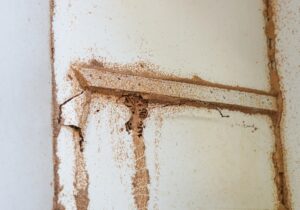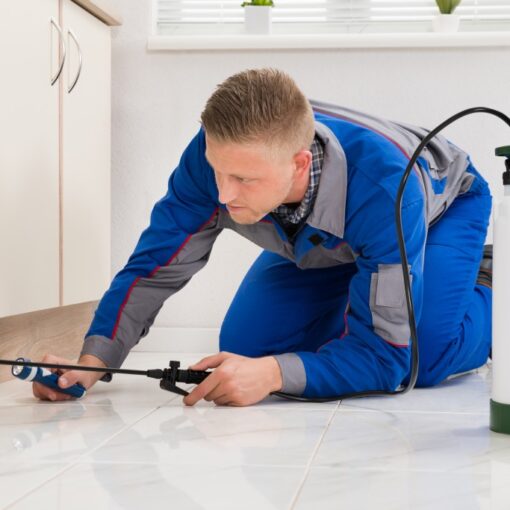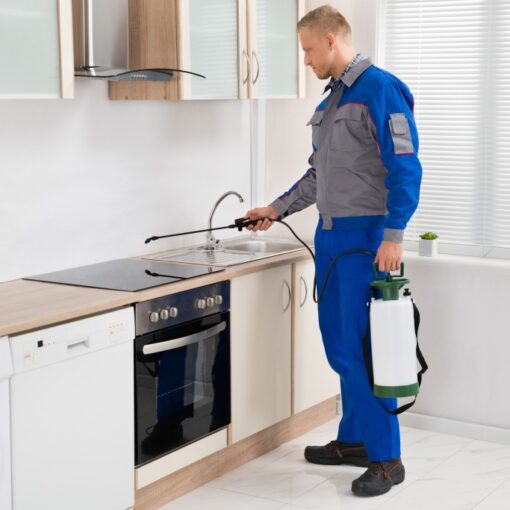 Understanding the Threat
Understanding the Threat
Termites, commonly known as the silent destroyers of homes, are small, pale-colored insects belonging to the order Isoptera. They have a diet that consists of cellulose, which attracts them to wood and other materials like paper and cardboard. Although termites are essential for breaking down dead plant material in forests and ecosystems, their presence in human dwellings can result in substantial structural harm if not addressed promptly.
It is of utmost importance to detect termite infestations at an early stage in order to carry out an efficient pest control termite treatment. Nevertheless, termites are well-known for their ability to remain undetected, resulting in significant damage before being noticed. Indications of termite activity typically involve wood that sounds hollow when tapped, discarded wings, mud tubes along walls or foundations, and small fecal pellets that resemble sawdust.
Identifying Termite Species and Their Behavior Patterns
It is crucial to have a comprehensive understanding of the various termite species and their behavior patterns in order to develop effective pest control strategies. Homeowners commonly encounter three main types of termites: subterranean termites, drywood termites, and dampwood termites. Subterranean termites construct their colonies underground and gain access to structures through mud tubes. On the other hand, dry wood termites infest dry wood and do not require contact with soil. Dampwood termites, as their name implies, thrive in moist environments and are often found in decaying wood.
Each termite species displays distinct behaviors and preferences, which significantly impact the selection of treatment methods employed by pest control professionals. For instance, subterranean termites are notorious for their insatiable appetite and ability to cause rapid and extensive damage. Conversely, dry wood termites may establish multiple satellite colonies within a single structure.
Homeowners can enhance the protection of their properties from termite infestation and ensure successful pest control termite treatment by becoming acquainted with the characteristics and behaviors of termites. Detecting termites early on, along with implementing suitable preventive actions and treatment plans, is crucial in safeguarding homes against the damaging effects of these persistent insects.
Signs of Termite Infestation
Termites are well known for their capacity to destroy homes without being easily noticed. Identifying the initial indicators of a termite infestation is essential for successful pest control treatment and avoiding significant harm to your property.
Recognizing the Early Warning Signs
One of the most common signs of termite activity is the presence of mud tubes along the foundation, walls, or other surfaces. These pencil-sized tubes offer protection to termites as they move between their colony and a food source, such as wooden structures or soil.
Moreover, wood that sounds hollow could indicate a termite infestation, as these insects consume wood from the inside out, leaving only a thin layer of intact timber. Another clear indication of a termite swarm is the presence of discarded wings near window sills, doors, or light fixtures, especially common in the spring when reproductive termites are looking to establish new colonies.
Conducting a Thorough Inspection of your Property
Conducting a comprehensive examination of your property is crucial in order to detect any indications of termite activity. Begin by thoroughly inspecting the exterior of your residence, with particular attention to areas where wood is in contact with soil, such as foundation walls, porch steps, and wooden siding. Be on the lookout for any cracks or gaps in the foundation, as termites can exploit even the tiniest openings to gain entry into your home.
When inspecting the interior, carefully examine basements, crawl spaces, and attics for any signs of termite damage, such as wood that appears sagging or discolored. Additionally, keep an eye out for frass, a powdery substance resembling sawdust, near termite galleries or entry points. To check for internal damage caused by termites, lightly tap along baseboards and wooden surfaces with a screwdriver or another hard object, listening for a hollow sound indicating hollowed-out wood.
It is important to become acquainted with the initial indicators of a termite infestation and to perform routine checks on your property. This will enable you to identify and resolve termite issues promptly, leading to successful pest control termite treatment and safeguarding the structural integrity of your residence.
Prevention Techniques
It is important to become acquainted with the initial indicators of a termite infestation and to perform routine checks on your property. This will enable you to identify and resolve termite issues promptly, leading to successful pest control termite treatment and safeguarding the structural integrity of your residence.
Implementing Proactive Measures to Deter Termites
It is essential to remove sources of moisture near your property to prevent termite infestations. Fix any leaks in faucets, pipes, and roofs quickly, and make sure that water drains away from the foundation by keeping gutters and downspouts clear. Moreover, consider using dehumidifiers in basements and crawl spaces to lower humidity levels, making it less favorable for termites.
Tips for Minimizing the Risk of Infestation
An alternative approach to prevent termites is by eliminating potential sources of food near your residence. It is advisable to keep firewood, mulch, and other materials containing cellulose away from the foundation, as these can entice termites and provide them with a pathway to enter your home. When constructing or renovating your property, it is recommended to use building materials that are resistant to termites. Additionally, to prevent direct contact between wood and soil, consider installing concrete or metal barriers around the foundations.
DIY Termite Control Methods
Homeowners confronted with a possible termite infestation may explore budget-friendly options to tackle the issue prior to resorting to professional pest control termite treatment services. Luckily, there exist various do-it-yourself techniques and natural solutions that can assist in minimizing termite damage and halting its progression.
Home Remedies and Natural Solutions for Termite Treatment
One effective method for do-it-yourself termite control involves the utilization of nematodes, which are small parasitic worms that consume termites and their larvae. These helpful organisms can be bought at gardening stores or online and introduced into the soil surrounding the impacted region. Combine the nematodes with water as per the instructions on the package and administer the solution to the soil with a sprayer. Nematodes function by infecting termites with bacteria, ultimately resulting in their demise.
An alternative natural remedy for termite management is orange oil, which is extracted from orange peels. Orange oil contains d-limonene, a substance recognized for its insecticidal characteristics. To utilize orange oil as a termite repellent, apply it directly to affected areas using a spray bottle or inject it into termite galleries with a syringe. Remember to wear protective equipment, as orange oil can cause skin and eye irritation.
Step-by-Step Instructions for DIY Termite Control
If you are looking for a more hands-on approach to termite control, one effective method is to create bait stations using cardboard traps. This do-it-yourself technique involves wetting strips of cardboard and placing them in areas where termite activity is suspected. Once the cardboard becomes infested with termites, it should be removed and burned to eliminate the pests. It is important to repeat this process regularly to monitor and reduce termite populations.
Although DIY termite control methods can provide temporary relief, they may not offer a long-term solution to infestation. For a comprehensive and lasting termite treatment, it is advisable to consult with a professional pest control service. However, incorporating natural remedies and proactive measures into your termite control strategy can help minimize damage and prevent infestations.
Chemical Treatments
Chemical treatments are extensively employed and remarkably efficient in managing termite infestations, providing homeowners with a variety of choices to combat these harmful pests. It is imperative to comprehend the diverse forms of chemical treatments accessible to ensure effective termite control and safeguard your residence from any potential harm.
Overview of Chemical Options for Termite Treatment
Soil-applied termiticides are a widely used chemical treatment for termite control. These liquid pesticides are administered around the home’s perimeter, forming a protective barrier that deters termites from infiltrating the building. This method can be implemented either during construction or as a post-construction measure, ensuring prolonged defense against termite infestations.
Termite baiting systems present another effective chemical treatment approach. By strategically positioning bait stations around the property, these systems entice termites to feed on the bait. Subsequently, the termites transport the bait back to their colony, facilitating its dissemination among other termites and ultimately resulting in the eradication of the entire colony. Not only are termite baiting systems environmentally friendly, but they also offer precise control over termite populations.
Understanding the Different Types of Chemical Treatments Available
Fumigation is a frequently employed chemical treatment technique for severe termite infestations. In this process, the residence is tightly sealed, and a potent gas, like sulfuryl fluoride, is introduced to exterminate termites throughout the entire building. Fumigation proves to be extremely efficient in eradicating termites and other pests; however, it necessitates professional application and evacuation of the premises during the treatment process.
Prior to choosing a chemical solution for termite management, it is crucial to take into account variables like the extent of the infestation, environmental implications, and safety precautions. Seeking advice from a certified pest control expert can assist in identifying the most suitable chemical treatment for your circumstances and guarantee successful termite control.
Baiting Systems
Termite baiting systems have become increasingly popular as a sustainable and eco-friendly approach to managing termite infestations. These systems operate by strategically positioning bait stations along the property’s perimeter to entice termites and eradicate entire colonies. Gaining a comprehensive understanding of how termite baiting systems operate, along with their advantages and disadvantages, is crucial for implementing an efficient termite treatment plan.
How Termite Baiting Systems Work
Termite baiting systems are commonly made up of bait stations that are loaded with cellulose-based material, which is extremely appealing to termites. After being set up, these bait stations are checked on a regular basis to detect any termite activity. Upon finding the bait, termites consume it and transport it back to their colony, where it is distributed among other termites, including the queen. Gradually, the bait interferes with the termite colony’s reproductive capabilities, eventually resulting in its elimination.
Pros and Cons of Using Bait Stations for Termite Control
The targeted approach of using bait stations for termite control is one of their primary advantages. Unlike traditional chemical treatments that create a chemical barrier around the home, baiting systems specifically focus on termite colonies where they reside. This approach minimizes the impact on non-target organisms and reduces the overall use of pesticides, making bait stations an environmentally friendly choice.
Furthermore, baiting systems offer long-term protection against termites as they can remain active for several years when properly monitored and replenished with bait. They also provide a non-invasive alternative to fumigation, eliminating the need for tenting or evacuating the property during treatment.
Soil Treatment: Preventing Termite Infestations at the Source
Soil treatment methods are a proactive approach to preventing termite infestations by creating a barrier around the foundation of a structure. These treatments involve applying termiticides directly into the soil to deter termites from entering the property. Understanding the various soil treatment methods and their application techniques is essential for effective pest control termite treatment and long-term protection of your home.
Application Techniques and Considerations
Granular termiticides offer an alternative method for treating soil, as they are directly applied to the surface and activated with water. These termiticides effectively target specific areas, such as the foundation or landscaping beds, to control termite populations. They are often used alongside liquid termiticides to provide comprehensive termite protection.
To ensure the effectiveness of soil treatments for termite control and minimize environmental impact, several factors should be taken into consideration. It is crucial to properly calibrate equipment and follow the manufacturer’s instructions to achieve the desired coverage and concentration of termiticide in the soil. Additionally, it is important to avoid disturbing treated soil areas to prevent termiticide degradation and maintain long-lasting protection.
Conclusion
It is of utmost importance to comprehend the danger posed by termites. The early identification and implementation of proactive measures such as soil treatments, chemical solutions, and baiting systems play a vital role in effectively controlling termite infestations and safeguarding homes against expensive damages.




